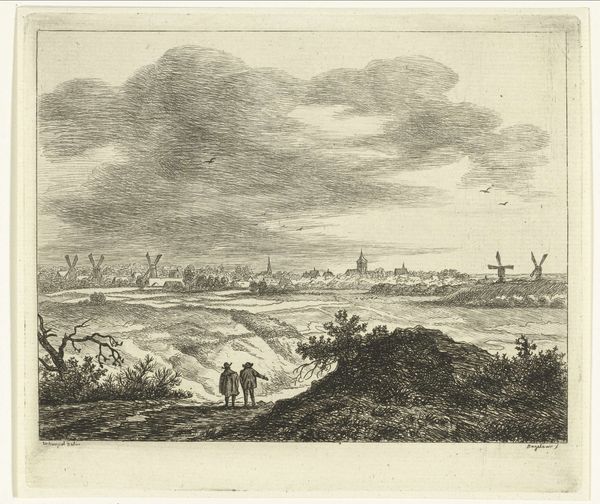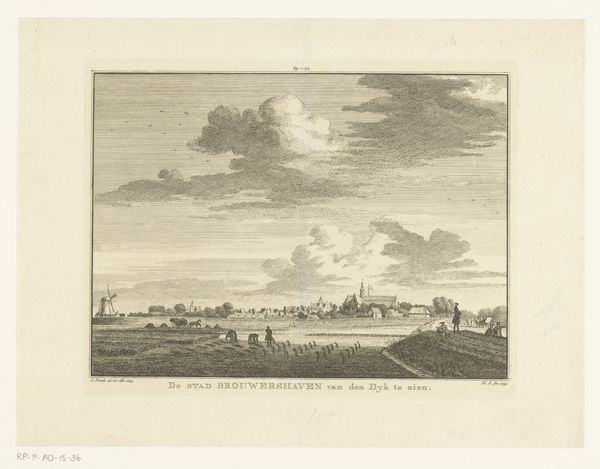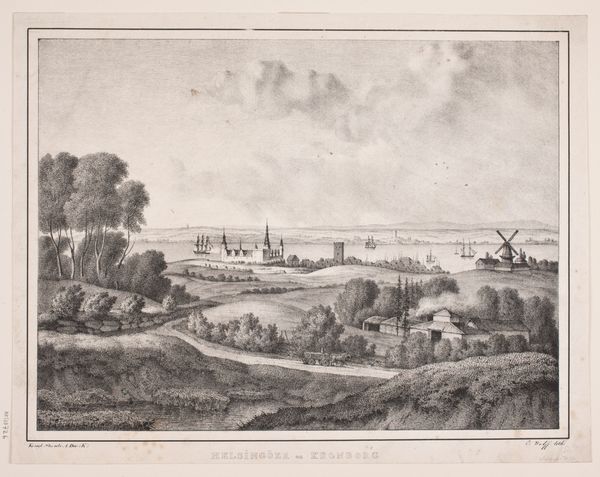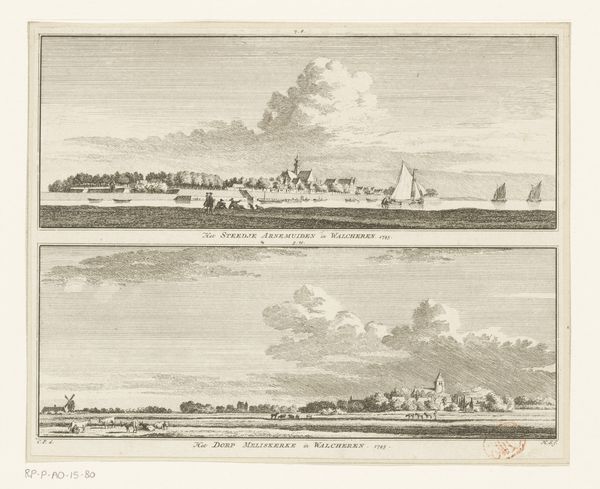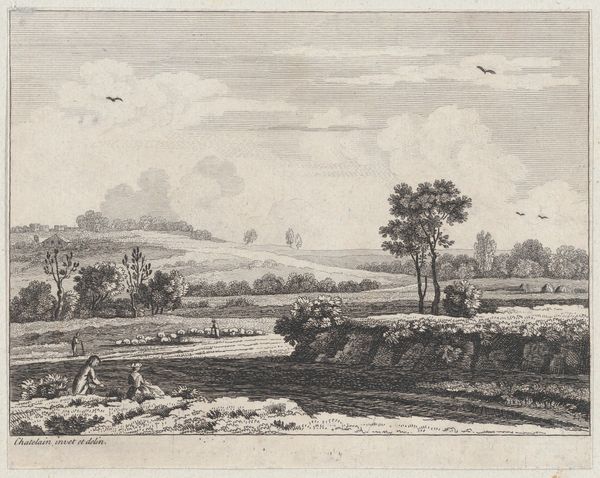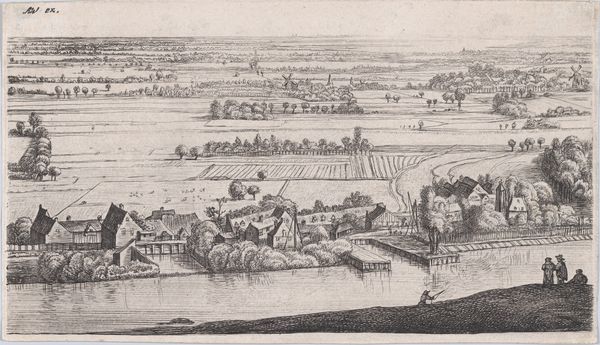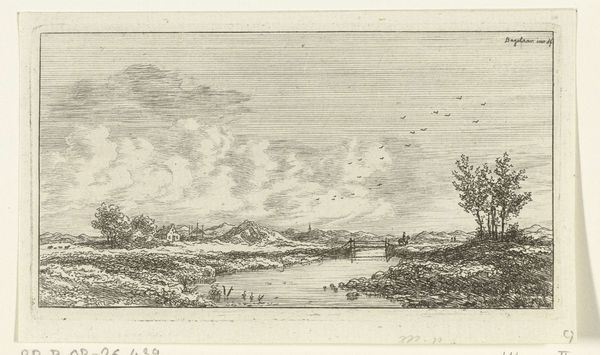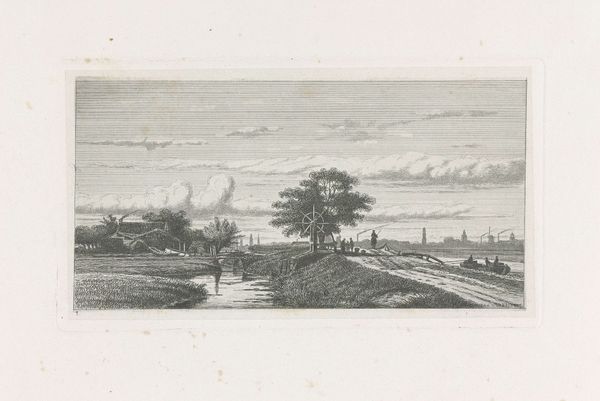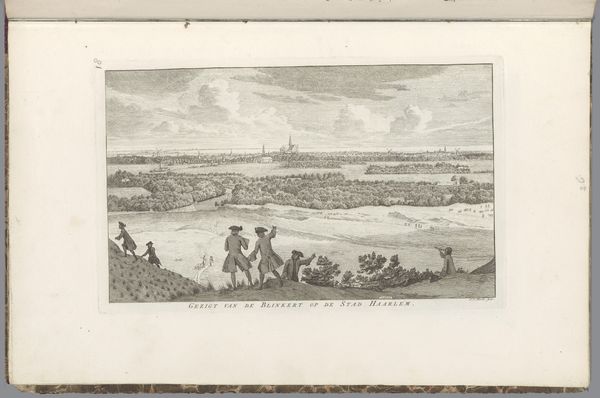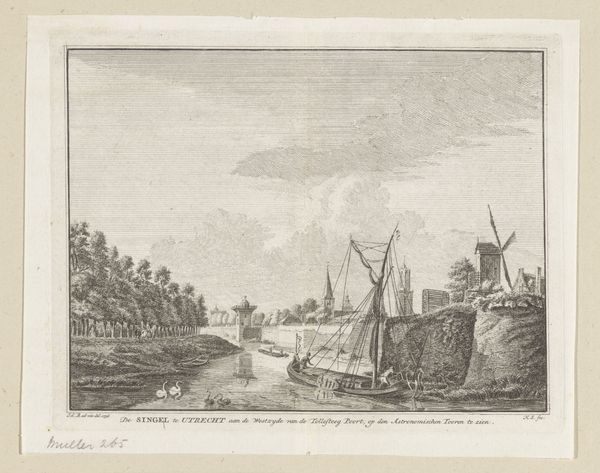
print, etching, engraving
#
dutch-golden-age
# print
#
etching
#
old engraving style
#
landscape
#
cityscape
#
engraving
Dimensions: height 76 mm, width 199 mm
Copyright: Rijks Museum: Open Domain
Curator: Look at this peaceful vista. The Rijksmuseum holds this delicate print called "Gezicht op Ameide, 1750," dating roughly from 1757 to 1792. It's an etching and engraving by Hendrik Spilman, a real snapshot of Dutch life from that era. Editor: Snapshot is right. It feels…utterly still. Not in a bad way, though! Like capturing a fleeting moment of quiet amid the everyday hustle, the world holding its breath. But is it a landscape or more of a memory? Curator: Both, I think. Spilman provides this kind of "birds eye view" of this riverside village. He masterfully uses engraving techniques, allowing the artist to create delicate and complex shading—see how that evokes light on the water. I am quite fascinated by the multitude of windmills dominating the landscape. They not only signify the area’s industry, but become these silent witnesses of time. Editor: Oh, totally, those windmills—like watchful giants overseeing the crossing ferry with a cow on board. Makes me wonder if the village church clock strikes different tones depending which windmill hears it better. Curator: Beautiful imagery, that reminds me: I believe that one important component of cityscapes such as these is to provide the viewer a certain sense of order or stability; and as a psychological observation of the past, it almost evokes an image of control over nature through its careful arrangement. Editor: You see control; I feel acceptance. Like the people have found a gentle rhythm with nature—the river, the fields, the inevitable rain that must come, despite how calm the skies appear in the print! Curator: A beautiful contrast between order and acceptance. Spilman seems to communicate the beauty that exists in liminal spaces, even industrial and rural ones; to me that represents the power that iconography holds for our collective human memories. Editor: Definitely resonates, doesn't it? Thanks, Spilman, for nudging us to see beyond the mundane.
Comments
No comments
Be the first to comment and join the conversation on the ultimate creative platform.
